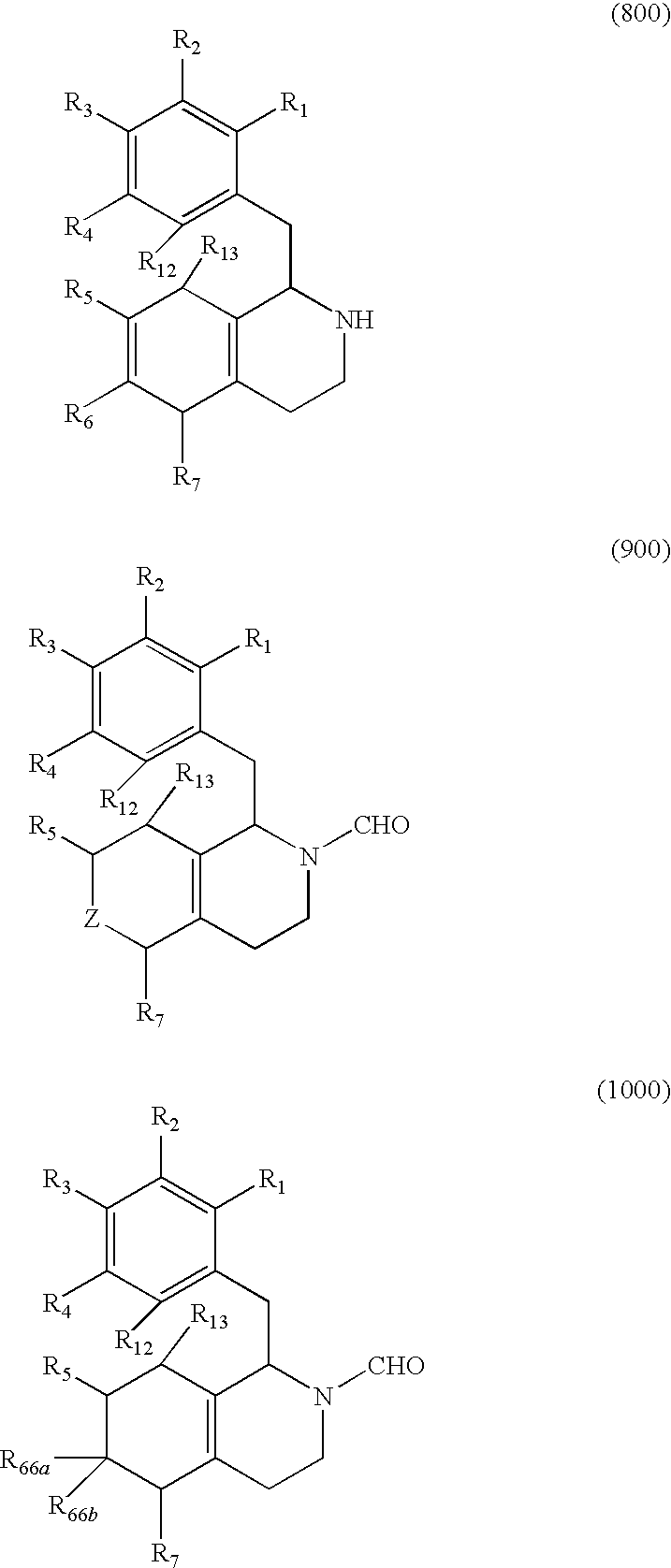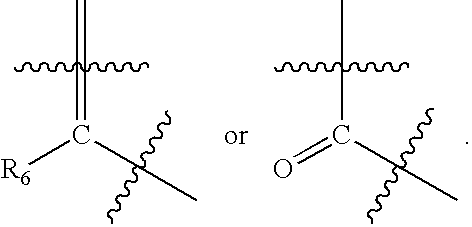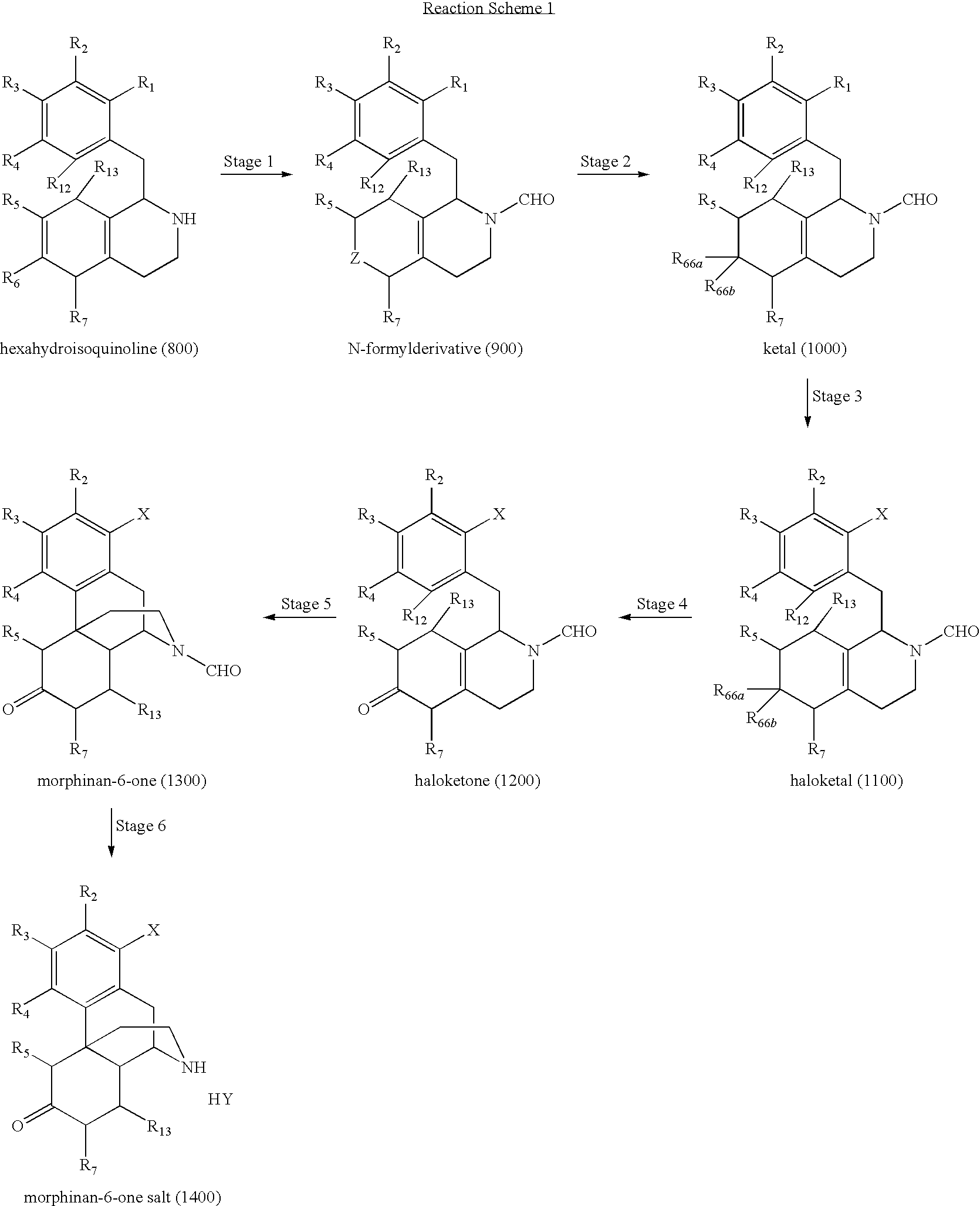Preparation of Substituted Morphinan-6-Ones and Salts and Intermediates Thereof
a technology of morphinan-6one and salt, applied in the field of processes, can solve the problems of low yield of desired cyclized products, low yield of morphinan-6one, and limitations to their effectiveness and/or efficiency
- Summary
- Abstract
- Description
- Claims
- Application Information
AI Technical Summary
Benefits of technology
Problems solved by technology
Method used
Image
Examples
example 1
Synthesis of N-Formyl Derivative (9A) from Hexahydroisoquinoline (8)
[0215]
[0216]Hexahydroisoquinoline (8) (100 g) was added to propyl formate (700 mL) in a reactor with stirring using a mechanical stirrer. The mixture was heated to reflux for 5 hours. At 2.5 hours, most of the solid was dissolved. K2SO4 (50 g) was then added to the mixture. After stirring for 1 hour, the solids were separated by filtration to give 750 mL of filtrate. The solid was washed with propyl acetate (2×100 mL) affording 950 mL of combined solution. Some of the solvent (˜750 mL) was removed by distillation (vapor temperature=82˜90° C.). The residue solution was allowed to cool to room temperature. Chloroform (CHCl3) (550 mL) was added to form a solution of N-formyl derivative (9) in propyl acetate / CHCl3. This solution of N-formyl derivative (9A) in propyl acetate / CHCl3 was ready for the conversion of N-formyl derivative (9A) to ketal (10) in Example 4.
example 2
Synthesis of N-Formyl Derivative (9A) from Hexahydroisoquinoline (8) (Alternate 1)
[0217]
[0218]To a dried reaction flask under inert atmosphere and stirred mechanically was added hexahydroisoquinoline (8) (59.60 g, 0.20 moles, 1.0 eq) and n-propyl formate (174.23 g, 1.98 moles, 10.0 equivalents). The thick slurry was warmed to 50° C. for one hour, then warmed to 75° C. for an hour, then refluxed for 4 hours. HPLC analysis of a reaction sample indicated that the reaction was complete (0 area % hexahydroisoquinoline (8), 95 area % N-formyl derivative (9A)). Even though a yield of the reaction was not calculated, the conversion was peak (single, hexahydroisoquinoline (8)) to peaks (rotamers, N-formyl derivative (9A)) indicating a quantitative yield. Removal of the by-products and excess n-propyl formate was accomplished by distillation (either atmospheric or reduced pressure) to a thick oil. The residual thick oil was dissolved in anhydrous n-propyl acetate (100 mL), and filtered throug...
example 3
Synthesis of N-Formyl Derivative (9A) from Hexahydroisoquinoline (8) (Alternate 2)
[0222]
[0223]Hexahydroisoquinoline (8) (6.15 g, 0.02 moles, 99 area %) was introduced into a flask containing 98% formic acid (70.44 g, 1.52 moles, 5.8 mL) cooled to 5° C. HPLC analysis showed compound (9.4) formed (98 area %). Acetic anhydride (20.83 g, 0.20 moles, 19.3 mL) was added dropwise. The reaction was stirred at room temperature, then warmed to 50° C. for 2 h. HPLC indicated compound (9.5) and compound (9B) formed. The solvent was evaporated under reduced pressure to a thick oil. To this oil was added distilled water (20 mL) and methanol (20 mL). 50% NaOH / H2O was added until the pH=14.0. This mixture was stirred for 1 h at room temperature. Then 50% HCl / H2O was added dropwise to pH=3.0. An off white precipitate slowly formed which stood at room temperature for 16 h. The product (9B) (5.97 g, 92% yield) was isolated by filtration, rinsed with distilled water (10 mL), and dried under vac (24 h, ...
PUM
| Property | Measurement | Unit |
|---|---|---|
| temperature | aaaaa | aaaaa |
| boiling point | aaaaa | aaaaa |
| boiling point | aaaaa | aaaaa |
Abstract
Description
Claims
Application Information
 Login to View More
Login to View More - R&D
- Intellectual Property
- Life Sciences
- Materials
- Tech Scout
- Unparalleled Data Quality
- Higher Quality Content
- 60% Fewer Hallucinations
Browse by: Latest US Patents, China's latest patents, Technical Efficacy Thesaurus, Application Domain, Technology Topic, Popular Technical Reports.
© 2025 PatSnap. All rights reserved.Legal|Privacy policy|Modern Slavery Act Transparency Statement|Sitemap|About US| Contact US: help@patsnap.com



